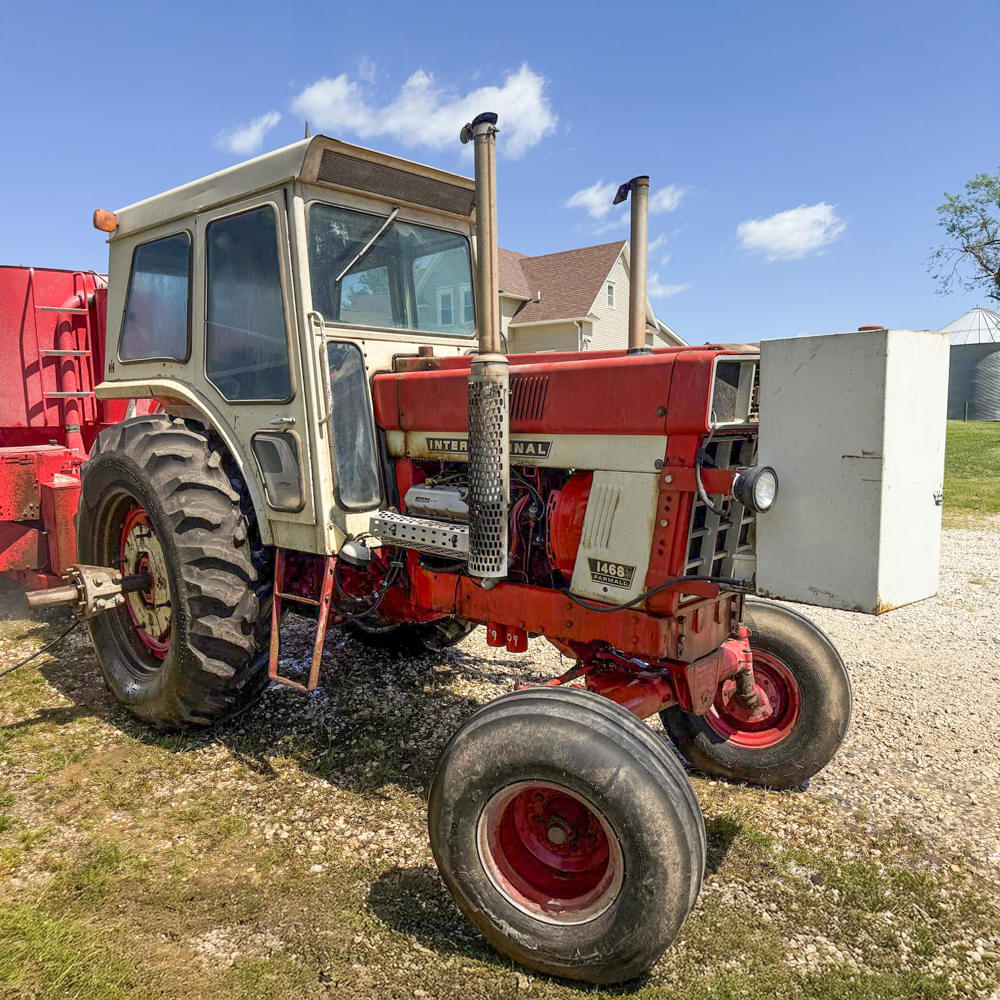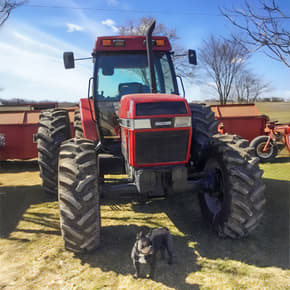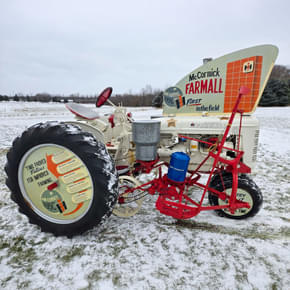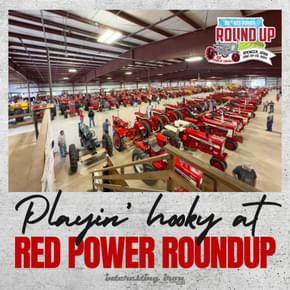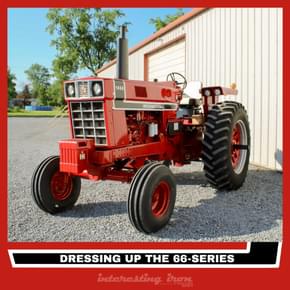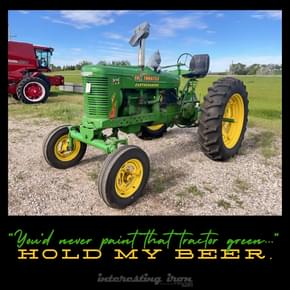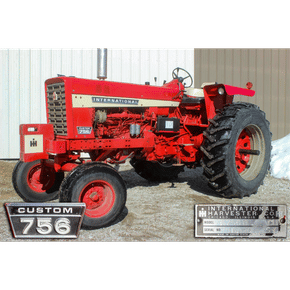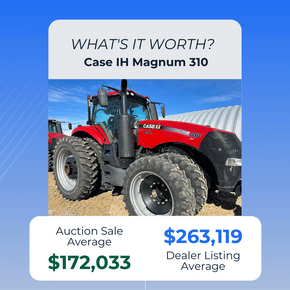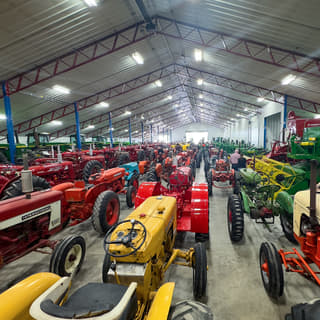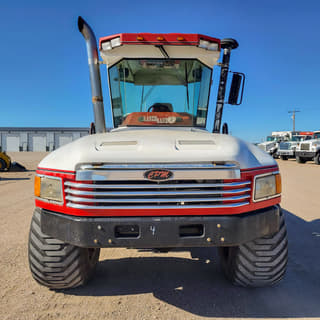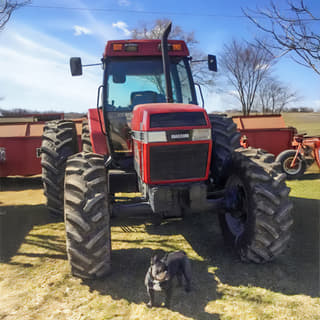The IH 1468 is kind of a weird animal, in the grand scheme of things, and I can’t really figure out if it was a success or a failure. As a farm tractor, I think it’s safe to say that it wasn’t a smashing success. However, sometimes I can’t help but wonder if a good farm tractor was really the primary goal? What if the goal was to build something cool just for the sake of building something cool? Stranger things have happened. I mean, you can buy a street-legal 2026 Corvette that makes 1,064 horsepower…on pump gas.
So for today’s column, just hear me out. At the end of the day this is just for fun and we all still love old tractors, right?
Regardless, it all starts with Massey.
Massey rolls the dice…
This all started when Massey Ferguson rolled out a new tractor in 1970. They’d done well early in the 60s with the 1100 and 1130 tractors, but they’d fallen behind in the horsepower race. They were hungry, so they gambled on something they hoped would shake up the North American market. They basically shoehorned a 510 cubic inch V8 from Perkins into an 1130 chassis and called it an 1150.
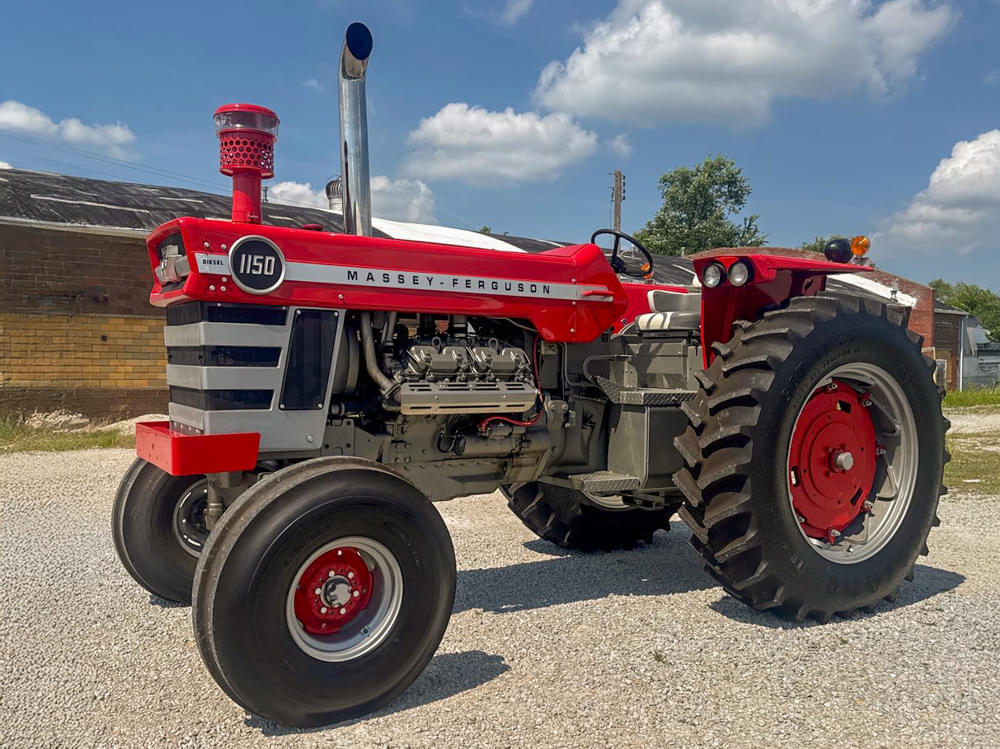
Was it a gutsy move? Definitely, but it worked! The 1150 looked great, and somehow when you stuffed a bus motor under the hood, it sounded good too! Furthermore, it made about 4 more PTO horsepower than the 1456, and kicked IH out of the top spot!
IH’s Marketing freaks-out…
Well, getting kicked off the horsepower throne did not sit well with IH’s marketing people.
They wasted no time in marching into the boardroom and declaring, “We need a V8 option in the 1466, and we need it yesterday!” And somehow, they convinced the top brass that farmers were clamoring for a muscle car disguised as a tractor. (And in all actuality, that may not have been as crazy as it seems; remember, muscle cars were in their prime in 1970. Transferring the muscle car concept into a tractor-shaped object might’ve been a pretty easy sell.)
Still, there was a fundamental problem with all this. Farmers don’t farm at high RPMs. Inline sixes make torque down low, exactly where you need it in the field. V8s are happiest at the top end. Great for drag strips. Not so much for pulling chisel plows.
But what if IH wasn’t necessarily concerned with building a great farm tractor? I mean, they already had a very successful lineup in the six-cylinder 66s. What if a sub-par farm tractor was the cost of looking cool when taking the horsepower crown back? Keep that in the back of your mind as you read this next section.
IH 1468: Raiding the parts bin…
At any rate, Harvester’s execs buy in to the V8 tractor concept and green-light the project. To save time, the engineers basically raided the 1466 parts bin—final drive, gearbox, cab, tin work, grille—pretty much everything they could. The big change was the DV-550, a 550-cubic-inch diesel V8 borrowed from the truck division. These motors usually lived in light-duty semis, the kind of straight trucks you’d see running around town delivering lumber and produce. IH’s engineers had to make some modifications to the 1466 chassis to stuff the motor in there, but they got it done. The motor tested at 145 PTO horsepower, putting IH back on top of the pedestal…which meant that Marketing could finally sleep at night.
Here’s the problem, though. Because they wanted to get it to market quickly, they had to make some compromises.
A diva in tractor’s clothing…
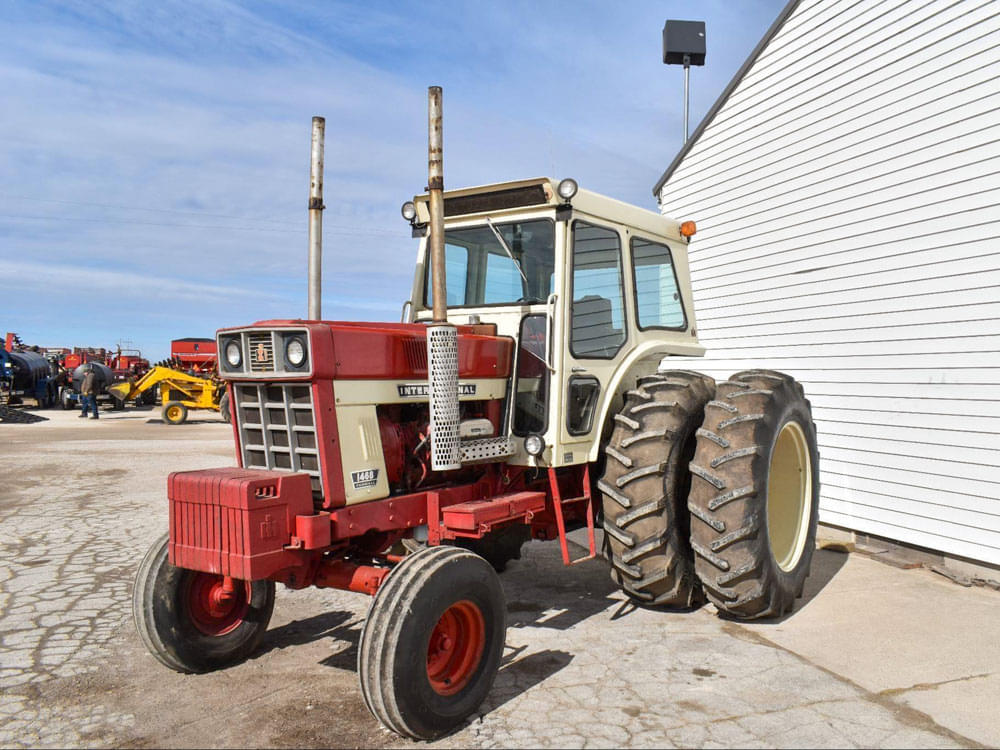
At the end of the day, the DV-550 came with the biggest compromises headaches. They didn’t like to start in cold weather, and I’m told that they smoked like freight trains until they warmed up (or you buried the throttle). At low RPM they’d rattle your teeth, and if you ran ’em at high RPM, they didn’t really like that either. Call ’em fragile, call ’em moody—whatever you want—but from what I’m told, they were never happy and I couldn’t help but wonder why.
So last night, I asked an old friend who’s wrenched on red motors since he was in diapers. He’s owns one today and he’s worked on a handful in the area over the years, too. He told me that some of it was the light-duty nature of the engine, and some of it had to do with the fueling. See, the tractor only ran on four cylinders until it hit about 80% engine load. And while some might tell you that was a clever fuel economy thing, the truth of the matter is that it was a workaround because the engine ran really rough on all eight. He also believes that if the engineers had spent more time dialing in the fuel pump, they probably would’ve run a lot better and they wouldn’t have needed that four-cylinder workaround nonsense to begin with.
I’ve heard one running on four and to me, it sounds real weird. Evidently I wasn’t alone in that, because quite a few of those tractors were reverse engineered to run on all eight about as soon as they got home—even if they did run like garbage sometimes.
Selling the “cool factor”
I know what you’re thinking.
“Uh…hello. Tractors that run like garbage aren’t cool. You’re shooting holes in your theory, Interesting Iron guy…”
And you could well be right.
Still, while they weren’t super-great in the field (which may or may not have been important), it wasn’t all bad. The 1468 looked and sounded great! To this day, those heat-shielded stacks and exhaust manifolds remind me of a Corvette with side pipes, which I’m sure is what Harvester was after when they designed them. They were gambling that the “cool factor” would attract the eyeballs of lots of farmers—especially younger ones.
Marketing got right after it building up the hype prior to the launch for the 1971 model year. Marketing touted it as “The Big Power Champ” for “the man who won’t take less than the best.” They even took a mild potshot at Massey, too, implying that while other companies had to outsource their engines, only IH’s own engine was good enough for the 68s. That makes me laugh, because Massey owned Perkins at the time, so technically it was no different than IH pulling an engine out of the truck division’s product catalog.
At any rate, the hype train worked, because farmers lined up by the dozens to give them a go!
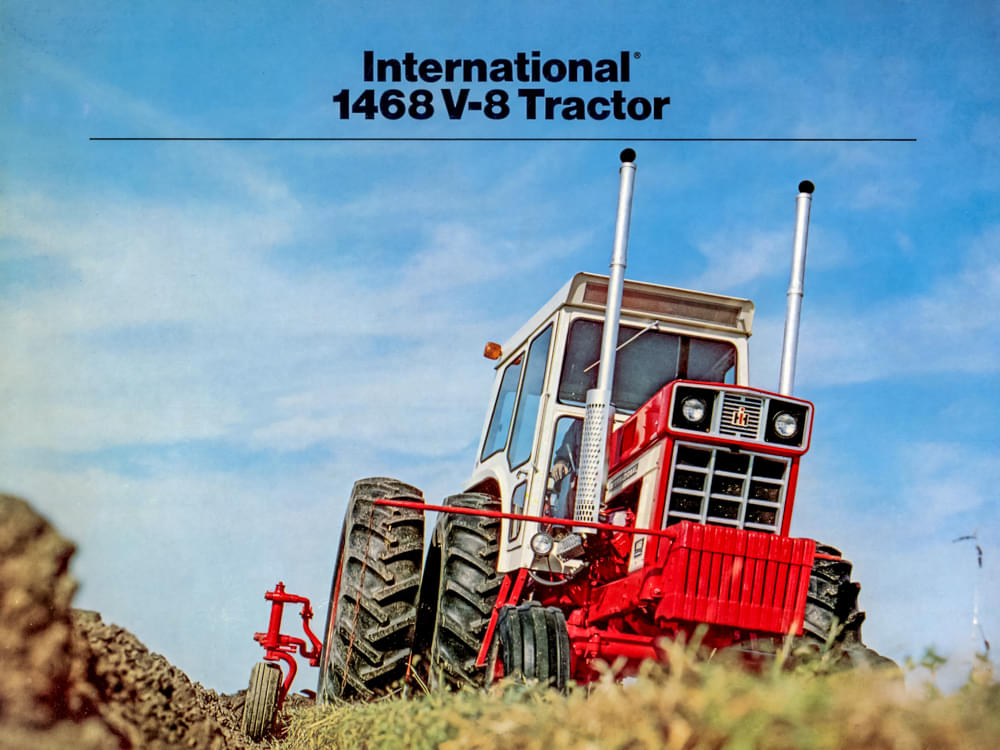
How’d it do in the field?
Farmers loved the look, but they figured out pretty quickly that V8 power didn’t really belong in the field. M&W even developed a twin-turbo kit for the DV-550 to help things…but that only made them worse. Those engines simply weren’t built to be turbocharged.
A close friend told me that his dad used to turn wrenches at a red dealer in northwest Missouri. He installed plenty of those kits, cranked up the pump screws, and sent the tractors back to the field for the customer. And like clockwork, within about a half a season, those tractors would come back on a trailer with a rod or two hanging out the side of the block.
This wasn’t isolated to the Show-Me State, either—it happened everywhere. Some farmers bit the bullet on a pricey rebuild. However, quite a few chose the salvage yard route, hunting down a DT-436 and frame rails from a 1466 to replace it. The engine swap wasn’t terribly difficult. All you had to do was change the frame rails and the engine and with a few minor adjustments, you’d be good to with what was essentially a 1466. Tough, dependable, and packed with torque where it mattered.
How’d it sell?
At the end of the day, the 1468 sold okay, but not great. From 1971-1974, they sold 2905 tractors. In 1975, IH juiced the 550’s horsepower just a little bit and put it in a slightly modified 1566 chassis and called it the 1568. It had the same planetary driveline and 3-speed transmission from the 1566, which a lot of farmers didn’t really love because it was either too fast or too slow—no in-between. And when you coupled a problematic motor with a ho-hum drivetrain, there wasn’t much of a cool factor anymore. Harvester only managed to move 862 of them.
Had IH chosen a different engine off the shelf (the DVT-573 would’ve been a great option), perhaps the story would’ve written itself differently from a farm tractor perspective. However, that’s not where the story ends. There’s another chapter. Stick with me.
The cool factor comes full-circle…
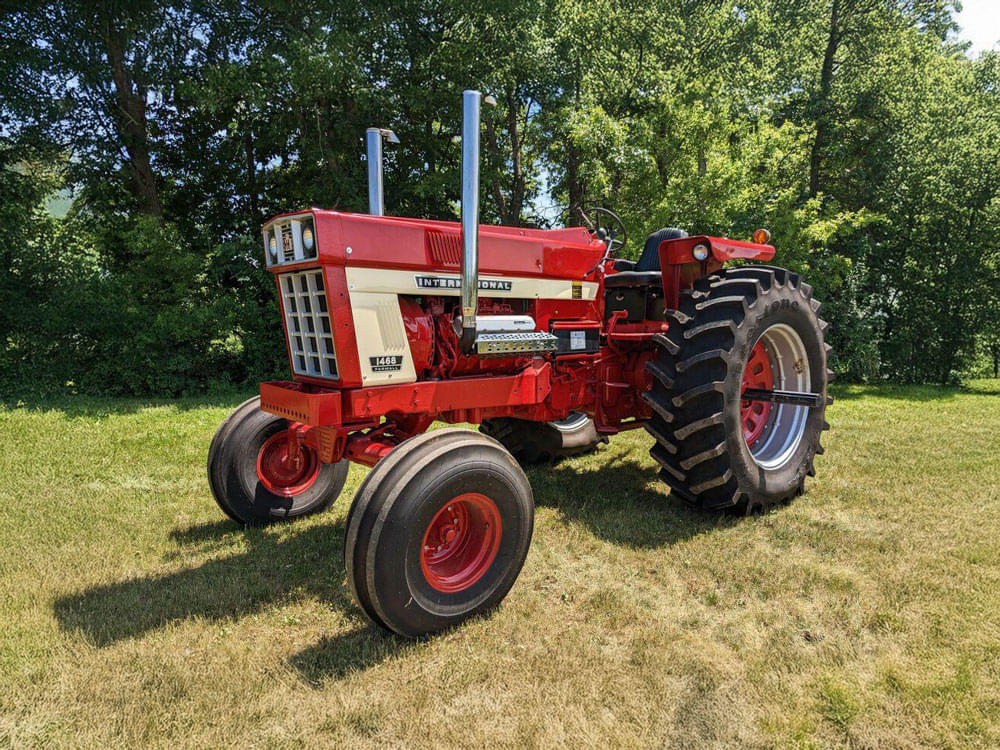
Thirty years ago, nobody really wanted these tractors because they weren’t great in the field, even if they did look cool. You could pick one up for next to nothing. Today, though? The IH 1468 sits near the top of every red collector’s wish list. So what caused the change?
I think that by now the poor performance memories have more or less worn off, and the nostalgia is coming full-circle. Today’s collectors think the 1468 is cool again, and the auction prices show that they’re willing to shell out for it. In 2022, the average auction price was just under $30K. By 2024, it had jumped to over $44K. If you want a really nice original or a sharp restoration today, you’d better plan on $45K at a minimum.
Only a handful hit the auction block each year—usually less than a dozen. Most of ’em are restored, but every so often an original comes out of the barn. And this week, believe it or not, there are two such machines crossing the block. Let’s take a quick look at ’em, shall we?
IH 1468 tractors currently listed on Tractor Zoom
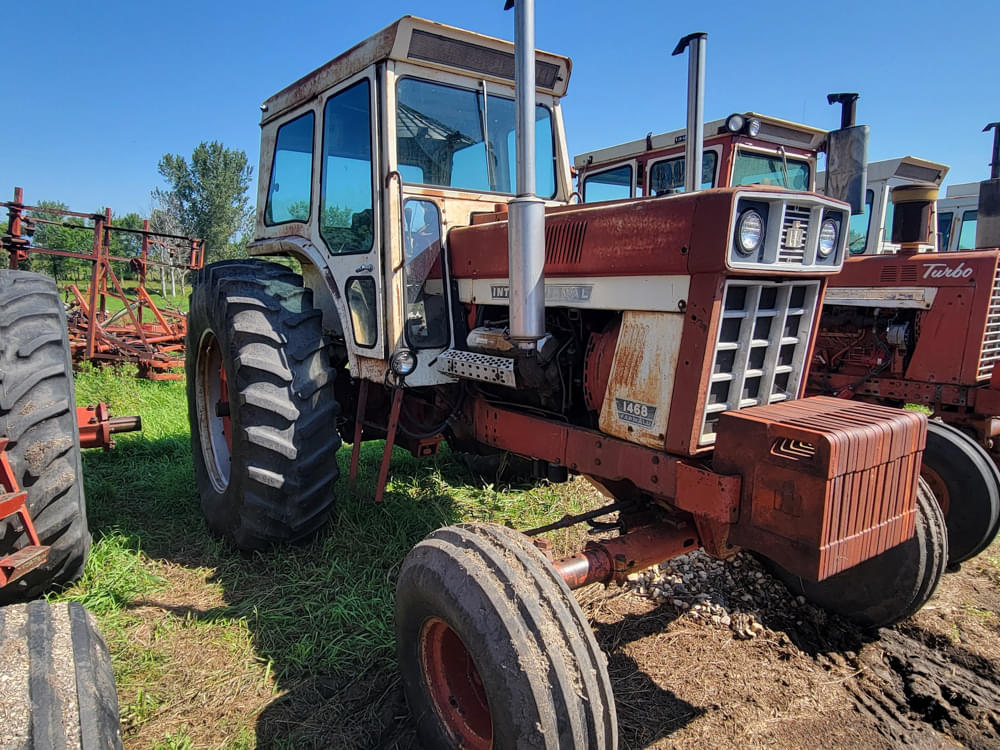
Seeing two IH 1468 listings on two different auctions within a week of each other is pretty uncommon these days. Furthermore, they’re both in their work clothes, and they both run and drive! From where I’m sitting, that’s really rare. If you’ve been looking for one, this might be your best opportunity this year.
Michael Maas’s IH 1468
The first one sells at an Aasness Auctioneers sale for the estate of Michael Maas on the Minnesota/South Dakota state line on Saturday, September 27th. Michael was an IH collector and farmer who lost a long battle with brain cancer about a year ago. His collection was pretty massive, too. I believe there are 70 or more tractors on the auction as well as a ton of parts, tools, and tires.
Earlier this week, a local farmer who follows our social media reached out about this auction. He told me that Michael was a really humble, happy guy with tremendous knowledge on all things mechanical. He said, “He was the kind of guy who, if you had a question, he wouldn’t talk you through it. He’d just show up and show you how to fix whatever it was that you were working on.”
That’s a one-in-a-million kind of guy. I wish I’d have had the opportunity to meet him.
As for the tractor, I know it runs and drives and I’m fairly certain the paint is original. And while it may have some patina, it’s clean and straight. Michael was pretty diligent in keeping his farm equipment in good running condition, too. Per the auctioneer’s listing, it’ll need a little bit of work on the floor of the cab, but other than that, this tractor is pretty darn nice!
Gene Wallin’s IH 1468
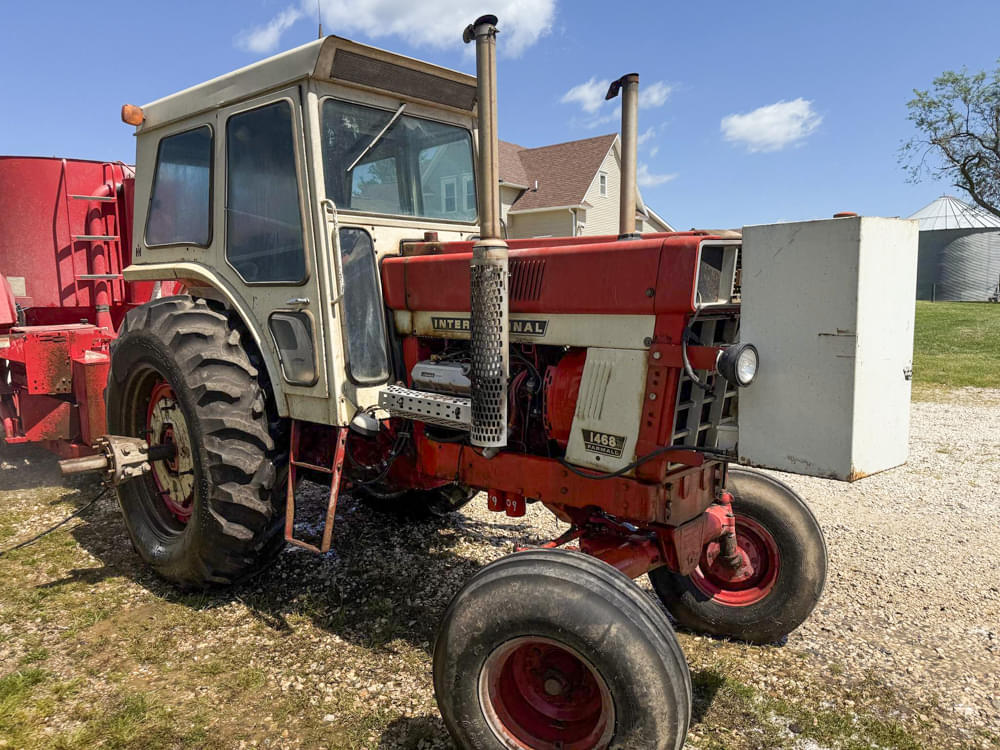
The second 1468 belonged to Gene Wallin, a farmer who passed a few years ago. He lived just south of Paullina, IA, a little town about an hour or so northeast of Sioux City. As you can probably tell from the Gehl mixer hooked to the tractor in the photo, he raised livestock.
Like Michael’s tractor in Minnesota, Gene’s tractor is in remarkably good shape; no dings or dented up sheet metal, and I’m fairly sure that’s original paint as well. The cab is in good shape and it’s reasonably clean on the inside. It’s got good rubber too; normally when you find these in the barn, the tires are pretty badly weather-checked and don’t like to hold air. That said, though, I don’t believe this tractor sat in the barn gathering dust. I believe it saw semi-regular use.
Wrapping up…
Like I said earlier, if you’ve been looking for an IH 1468, having two to choose from selling within a few days of one another is a pretty unique opportunity. They’re both pretty solid examples of the model, and I think these two tractors have a lot of potential. With a little time and elbow grease (and maybe a piece or two from a local salvage yard), these will both clean up really nicely. It’ll be fun to watch the bidding, and interesting to see where they end up.
As far as whether or not my theory holds any water? I’ll let you be the judge. That said, let me remind you…sometimes companies build cool stuff just because they want to build cool stuff. I mean, at one point a few years ago, you could get a Hellcat motor in just about everything Dodge built except for a minivan…and they even toyed with making those!
Make it a great week, folks, and go check out those 1468s selling later this week at the link up top. They’re pretty cool!

